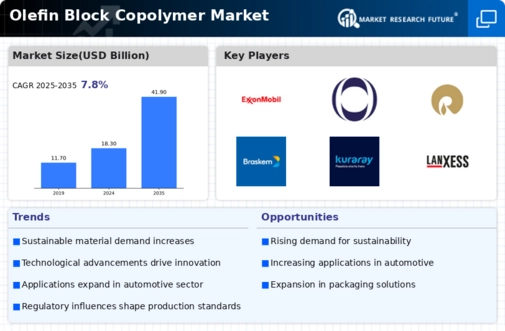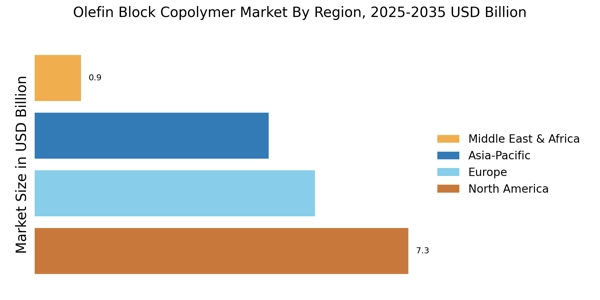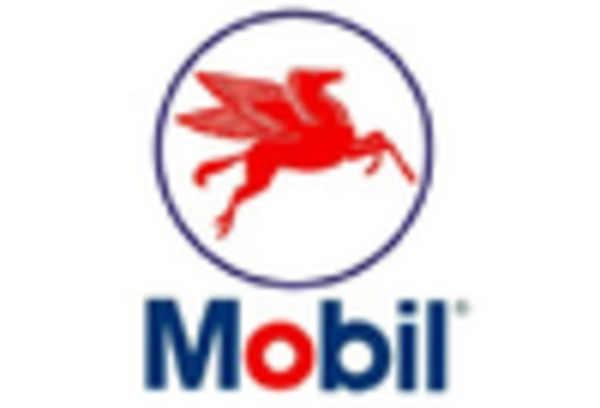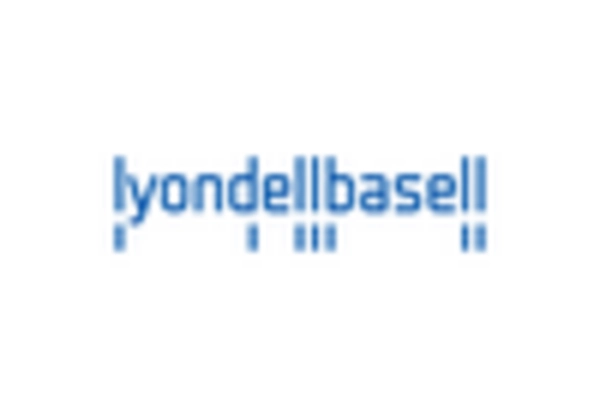The Olefin Block Copolymer Market is characterized by a dynamic competitive landscape, driven by innovation, sustainability, and strategic partnerships. Key players such as LyondellBasell Industries (US), ExxonMobil Chemical (US), and SABIC (SA) are at the forefront, each adopting distinct strategies to enhance their market positioning. LyondellBasell, for instance, emphasizes innovation in product development, focusing on high-performance materials that cater to diverse applications. ExxonMobil Chemical, on the other hand, leverages its extensive supply chain capabilities to optimize production efficiency, while SABIC is increasingly investing in sustainable practices, aligning its operations with global environmental goals. Collectively, these strategies not only enhance individual company profiles but also contribute to a competitive environment that prioritizes technological advancement and sustainability.
In terms of business tactics, companies are increasingly localizing manufacturing to reduce lead times and enhance responsiveness to regional market demands. Supply chain optimization remains a critical focus, particularly in light of fluctuating raw material prices and geopolitical uncertainties. The market structure appears moderately fragmented, with several key players exerting considerable influence. This fragmentation allows for niche players to emerge, fostering innovation and competition, while larger firms consolidate their market share through strategic acquisitions and partnerships.
In August 2025, LyondellBasell Industries (US) announced a significant investment in a new production facility in Texas, aimed at increasing its capacity for olefin block copolymers. This strategic move is expected to enhance the company's ability to meet growing demand in the automotive and consumer goods sectors, thereby solidifying its market leadership. The investment underscores LyondellBasell's commitment to innovation and operational efficiency, positioning it favorably against competitors.
In September 2025, ExxonMobil Chemical (US) launched a new line of sustainable olefin block copolymers derived from bio-based feedstocks. This initiative not only aligns with the increasing consumer demand for environmentally friendly products but also reflects ExxonMobil's broader strategy to integrate sustainability into its core operations. The introduction of these products is likely to attract a new customer base, enhancing the company's competitive edge in a market that is progressively leaning towards sustainability.
In July 2025, SABIC (SA) entered into a strategic partnership with a leading technology firm to develop advanced digital solutions for its manufacturing processes. This collaboration aims to enhance operational efficiency through AI and machine learning, thereby reducing costs and improving product quality. Such initiatives indicate a broader trend within the industry towards digital transformation, which is becoming increasingly vital for maintaining competitiveness in a rapidly evolving market.
As of October 2025, the competitive trends within the Olefin Block Copolymer Market are heavily influenced by digitalization, sustainability, and the integration of advanced technologies. Strategic alliances are playing a pivotal role in shaping the current landscape, enabling companies to leverage complementary strengths and enhance their market offerings. Looking ahead, it appears that competitive differentiation will increasingly pivot from traditional price-based competition to a focus on innovation, technological advancement, and supply chain reliability, as companies strive to meet the evolving demands of consumers and regulatory frameworks.


















Leave a Comment